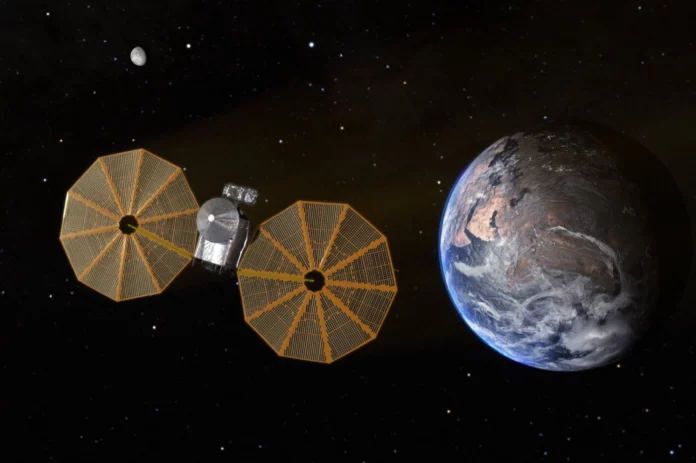The asteroid-hunting spacecraft Lucy will make its second gravity assist to Earth today, flying past our pale blue dot on its way to a group of asteroids known as the Trojans.
Lucy is a spacecraft that is embarking on a 12-year journey to the distant solar system, where it will explore a group of asteroids to better understand the origin of the outer planets and the birth of the solar system. But Lucy needs a little push to get there, and her upcoming flyby is set to take place tonight, according to a statement from NASA.
There’s a common belief that once a mission launches, it’s gone, never to be seen again in these parts. This is often not true – spacecraft don’t have a lot of fuel and often use the gravitational pull of solar system objects to speed up their journey to the (relatively) far corners of the universe. Tonight, Lucy will do just that as it orbits the Earth to gain the speed needed to travel to the asteroids of the Trojan system.
Tonight, Lucy will reach speeds of more than 33,000 miles per hour (53,100 km/h) as it flies over the Earth. Lucy will spend about 20 minutes in the Earth’s shadow and may become visible when it emerges on the other side.

Earlier this week, the European Space Agency’s BepiColombo spacecraft flew past Mercury for the fifth time as the agency plans to have it orbit the planet in November 2026. In November of this year, NASA’s Parker Solar Probe made its last flyby of Venus, using the neighbor’s gravity to descend to the surface of our star. Parker’s closest approach to the Sun will be on Christmas Eve.
This is Lucy’s second gravitational approach to Earth; the first took place in October 2022 and allowed the spacecraft to fly past the small asteroid Dinkinesh. The upcoming gravitational acceleration will put Lucy into a six-year orbit that will send the spacecraft through the asteroid belt to the Rose asteroids, with the first encounter expected in 2027. Gravitational acceleration will increase Lucy’s speed relative to the Sun by more than 16,000 miles per hour (25,750 kilometers per hour).
Lucy’s next stop will be the main-belt asteroid Donald Johanson, which the spacecraft will fly by on April 20, 2025. After that, it will go to infinity, to the asteroid belt and beyond.









